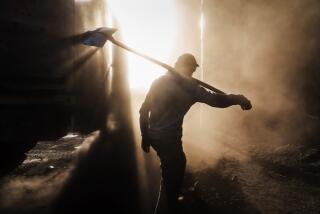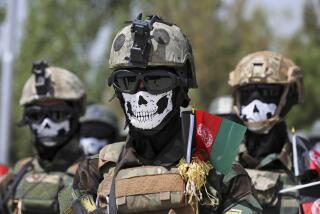‘Modern’ Warfare Changes Nothing
- Share via
Re “Fierce Fight in Afghan Valley Tests U.S. Soldiers and Strategy,” March 24: Let’s see if I have this right. On one side there’s the only superpower in the world facing off with the Taliban and Al Qaeda forces consisting of a Third World, ragtag armed mob. One side has “fast mobile ground forces using flexible tactics, sophisticated battlefield electronics and close-in air power”; the other side has light infantry weapons, some dating back to World War I.
Operation Anaconda was designed to squeeze the enemies and prevent them from escaping that local area. Golly, they stood and fought against jet fighters, AC-130 gunships and attack helicopters for 18 hours; during that time they ambushed a convoy and pushed the Americans out of Sher Khan Khel, a village; they then retreated to the east to escape to fight another day.
Our generals called it a great victory and blamed the Afghan contingent for withdrawing and allowing the Taliban/Al Qaeda forces to escape. What’s wrong with this picture? As a former Marine, I was on my way to Southeast Asia when we heard the news of the first fight Americans had at Ia Drang in 1965, with the same results, and things got worse as time passed on.
Robert Hughes
Santa Ana
*
Your article was well researched and well written. It gave readers a good look at the infantryman in Afghanistan. I know things have changed over the years, but as I read the article I got that “been there and done that” feeling.
I earned my Combat Infantry Badge during World War II and, as a result, I really can’t stand to read the stories and watch the movies about the bravado of war. But my wife recommended that I read this story. It really presents ground warfare from an infantryman’s point of view, pretty much as I remember it from Europe. Congratulations for a job well done.
Robert Brach
Desert Hot Springs
More to Read
Sign up for Essential California
The most important California stories and recommendations in your inbox every morning.
You may occasionally receive promotional content from the Los Angeles Times.













